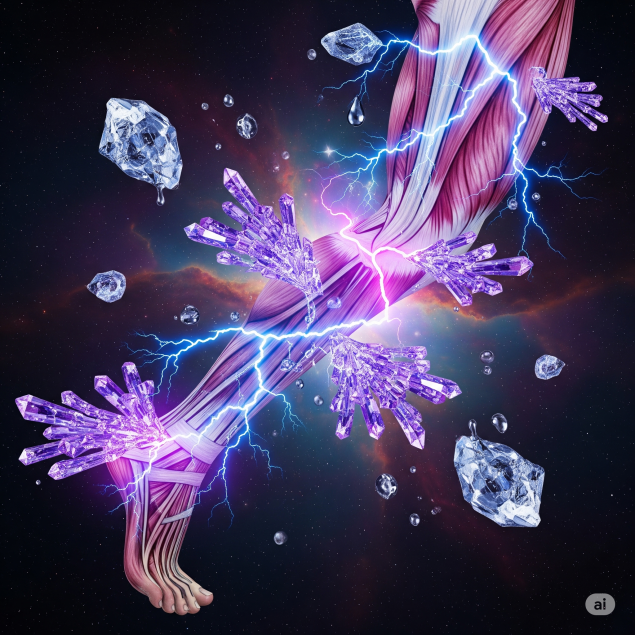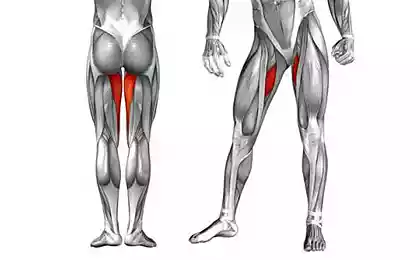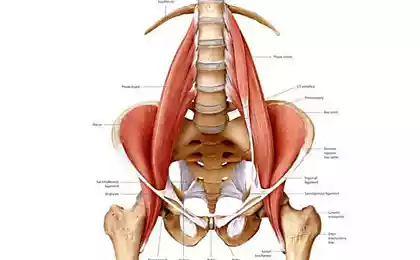145
6 reasons why there are cramps in the legs
Understand the mechanisms of painful muscle spasms and ways to prevent them

Imagine sleeping peacefully in your bed when suddenly a sharp, piercing pain in your calf muscle literally pulls you out of Morpheus' arms. Familiar? According to medical statistics, about 60% of adults periodically experience night cramps in the legs, and for some this problem becomes a real nightmare, disrupting the quality of sleep and daily life.
Leg cramps are not just a temporary inconvenience. They can signal serious disorders in the body, from banal dehydration to problems with the endocrine system. Understanding the true causes of this phenomenon will help not only get rid of painful sensations, but also prevent the development of more serious diseases.
Anatomy of convulsions: what happens in the muscle?
Before diving into the causes, it is important to understand the mechanism of seizures. A muscle cramp is an involuntary, painful contraction of a muscle that can last from a few seconds to several minutes. At this point, the muscle fibers literally “jam” in a state of contraction, which causes a characteristic acute pain.
Reason 1: Electrolyte Deficiency: An Invisible Threat
Magnesium, potassium, calcium and sodium – these four “riders” of electrolyte balance play a key role in the normal functioning of muscles. When their concentration in the blood is disturbed, the muscles begin to rebel.
Magnesium deficiency is especially insidious - it develops slowly and almost imperceptibly. Modern food contains 2-3 times less than 50 years ago, due to soil depletion. At the same time, stress, alcohol and some medications actively remove magnesium from the body.
Add to your diet dark chocolate (at least 70% cocoa), nuts and pumpkin seeds – they are excellent sources of magnesium. A banana before bed will help make up for a potassium deficiency.
Reason 2: Dehydration is the hidden enemy of muscles
The human body is 60% water, and muscle tissue is particularly sensitive to water deficiency. With dehydration, the blood thickens, the transport of nutrients to the muscles is disrupted, and the concentration of electrolytes becomes critically high.
Interesting fact: many people are chronically dehydrated without even knowing it. Thirst is already a late signal from the body, meaning that water deficiency is about 2%.

Reason 3: Disorders of blood circulation - when the vessels fail
Varicose veins, atherosclerosis, diabetic angiopathy - all these conditions have one thing in common: a violation of normal blood flow in the lower extremities. When muscles do not get enough oxygen and nutrients, they begin to “protest” seizures.
Especially often this occurs at night, when the overall blood flow slows down, and a prolonged immobile position aggravates stagnation in the veins.
Reason 4: Neurological disorders - when the "wires" fail
Peripheral neuropathy, pinched nerves, spinal cord injuries - these conditions disrupt the normal transmission of nerve impulses to the muscles. The result is chaotic contractions that we feel like seizures.
Diabetic neuropathy deserves special attention: elevated blood glucose levels literally “poison” nerve fibers, making them unable to properly manage muscle contractions.
Reason 5: Thyroid problems – hormonal imbalance
The thyroid gland is the conductor of an orchestra called "metabolism." When it does not work properly, the whole body suffers, including the muscular system. Hypothyroidism slows metabolic processes in the muscles, making them more prone to spasms.
Paradoxically, hyperthyroidism can also cause seizures - an excess of thyroid hormones leads to increased excitability of the nervous system and muscle tissue.

Reason 6: Drug Side Effects: The Dual Nature of Therapy
Diuretics, statins, ACE inhibitors – these and many other drugs can provoke muscle cramps as a side effect. Diuretics remove from the body not only excess fluid, but also important electrolytes. Statins sometimes cause myopathy - damage to muscle tissue.
It is important to understand that this does not mean that you need to abandon the prescribed treatment. You just need to discuss with your doctor the possibility of adjusting the dosage or replacing the drug.
If convulsions in the legs are accompanied by swelling, changes in skin color, constant pain or occur after the start of taking new drugs - this is an occasion for urgent consultation with a specialist. Also alarming symptoms are seizures that last more than 10 minutes or recur several times a night.
Practical recommendations for the prevention of seizures
Drink at least 30 ml of water per kilogram of body weight daily. In hot weather or with intense training, this norm should be increased. The best indicator of adequate hydration is light yellow urine.
Stretching before bedtime – Simple prevention Light stretching of calf muscles for 5-10 minutes before bedtime can significantly reduce the likelihood of nocturnal cramps. Exercise “wall” is especially effective: stand at arm’s length from the wall and rest against it, without tearing your heels from the floor.
Proper nutrition - investment in muscle health Include in the diet foods rich in magnesium (green leafy vegetables, nuts, seeds), potassium (bananas, potatoes, avocados) and calcium (dairy products, sesame, almonds). Limit your intake of caffeine and alcohol – these contribute to the elimination of important minerals.
Use orthopedic foot cushions, maintain a comfortable bedroom temperature (18-20°C) and avoid heavy blankets that can squeeze the lower limbs. Sometimes a simple change of sleeping position solves the problem of seizures.
Modern methods of diagnosis and treatment
Diagnosis of the causes of seizures in the legs requires an integrated approach. The doctor can prescribe blood tests for the level of electrolytes, B vitamins, thyroid function, as well as instrumental studies: ultrasound of the vessels of the lower extremities, electromyography, MRI of the spine.
In the arsenal of modern medicine there are effective methods of treatment: from correction of deficit states to the use of muscle relaxants and physiotherapy procedures. It is important to remember that self-medication can be dangerous - each case requires an individual approach.
Conclusion: the way to life without seizures
Seizures in the legs are not a sentence, but a signal of the body about the need to pay attention to its health. Understanding the causes, preventive measures and timely contact with specialists will help to return comfort and restful sleep. Remember, your health is in your hands, but sometimes those hands need professional help.
Glossary of terms
electrolytes
Mineral substances in the body that conduct electrical impulses and regulate water balance, muscle contractions and nervous system functions.
Hypothyroidism
A condition in which the thyroid gland produces an insufficient amount of hormones, which leads to a slowdown in metabolic processes in the body.
Peripheral neuropathy
Peripheral nerve damage, which can cause numbness, tingling, pain, and muscle weakness, usually in the hands and feet.
muscle relaxants
Medications that reduce muscle tension and spasms by affecting the central nervous system or directly on muscle tissue.
Electromyography
Diagnostic method, which measures the electrical activity of muscles and helps to identify disorders in the neuromuscular system.
angiopathy
A general term for diseases of blood vessels that can affect the arteries, veins or capillaries of various organs and tissues.























